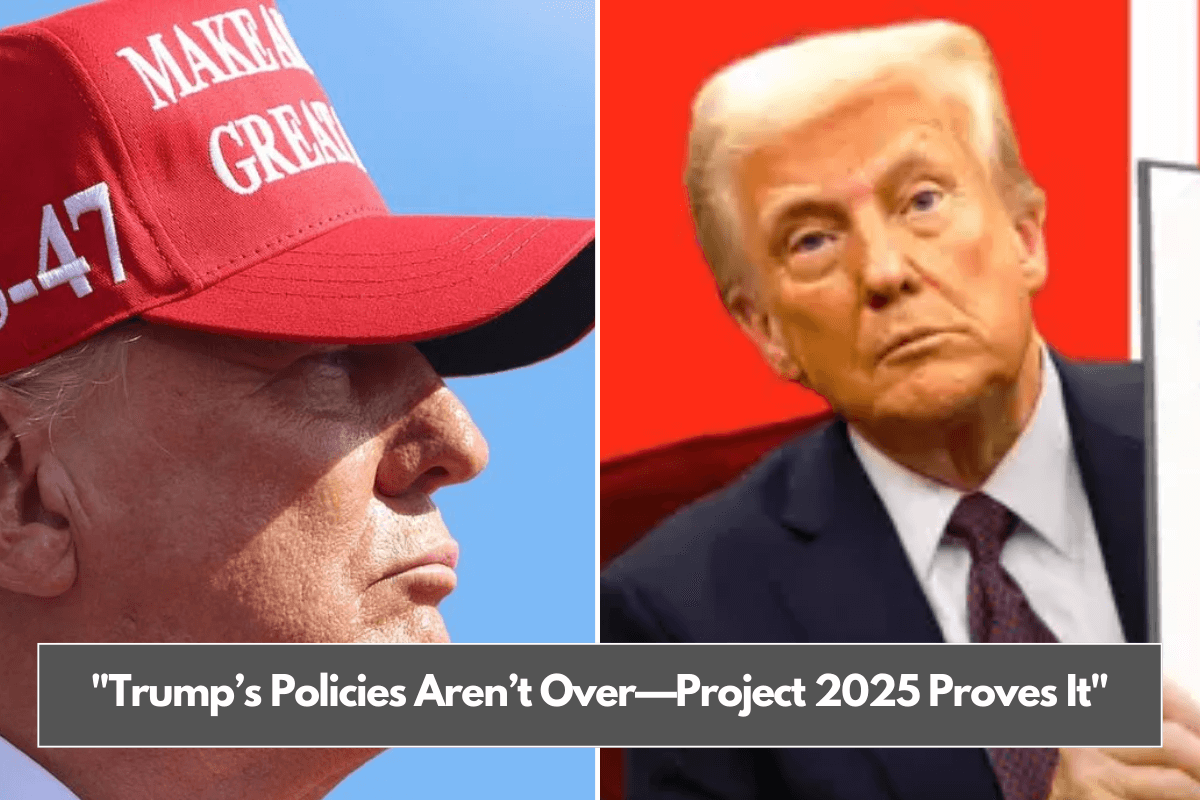As President Donald Trump begins his second term, many of his new policies closely align with proposals outlined in Project 2025, a conservative policy blueprint developed by the Heritage Foundation.
Although Trump initially distanced himself from the initiative during his campaign, the overlap between his executive orders and Project 2025’s recommendations has raised questions about its role in shaping his administration.
Let’s explore key areas where Trump’s new policies reflect the conservative think tank’s vision.
What is Project 2025?
Project 2025 is a 900-page policy plan created by the Heritage Foundation to guide the next Republican president in overhauling the executive branch. The initiative covers a range of conservative proposals, from reducing federal spending to reshaping national security and immigration policies.
Though Trump publicly criticized the plan during his campaign, many of its contributors served in his first administration and are now back in key positions in his second term. For example, Russ Vought, who co-authored sections of the policy roadmap, has been nominated to lead the Office of Management and Budget (OMB).
Key Areas Where Trump’s Policies Align with Project 2025
1. Restructuring FEMA and Disaster Relief
Trump signed an executive order establishing a review of the Federal Emergency Management Agency (FEMA) and suggesting that disaster response management should be handled primarily by states.
This echoes Project 2025’s proposal to reduce federal involvement in disaster response, shifting most of the financial burden to state and local governments.
Project 2025 also calls for reforms to FEMA’s cost-sharing structure, recommending that the federal government cover only 25% of costs for smaller disasters and up to 75% for major disasters. Trump’s review of FEMA indicates potential changes along these lines.
2. Ending Diversity, Equity, and Inclusion (DEI) Practices
On his first day back in office, Trump signed an order terminating DEI programs within the federal government. His order claims that DEI policies can discriminate against individuals based on race or gender and violate civil rights laws.
This move aligns directly with Project 2025’s recommendations to eliminate DEI programs and remove related terms from federal policies, contracts, and legislation. The Heritage Foundation’s blueprint argues that such initiatives undermine fairness and promote divisiveness.
3. Targeting Public Broadcasting (NPR and PBS)
The Federal Communications Commission (FCC) is investigating NPR and PBS for potential violations of federal law regarding noncommercial broadcasting. Trump’s administration is also considering defunding the Corporation for Public Broadcasting, which funds these outlets.
This policy reflects Project 2025’s call to strip federal funding from NPR and PBS, accusing them of promoting left-leaning ideologies and no longer serving the public interest. The initiative also recommends revoking their status as noncommercial educational broadcasters.
4. Freezing Federal Assistance Programs
Trump ordered a temporary freeze on federal grants and assistance programs to review their compliance with his administration’s priorities. This policy echoes Project 2025’s emphasis on cutting federal spending and ensuring funds align with conservative values.
OMB nominee Russ Vought, a key contributor to the Project 2025 policy book, has called for stricter control over federal budgets and apportionments to prevent waste and promote the president’s agenda.
5. Restricting Gender-Affirming Care for Minors
Trump signed an executive order banning the use of federal funds for gender-affirming care for individuals under 19. The order also targets coverage of such treatments under federal health plans.
Project 2025 similarly criticizes gender-affirming care, arguing that it causes irreversible harm and lacks scientific evidence. The blueprint calls for the rollback of federal guidance supporting gender-affirming treatments.
6. Revoking Security Clearances
Trump has begun the process of revoking security clearances for former intelligence officials who signed a letter during the 2020 election linking Hunter Biden’s laptop to Russian disinformation.
This action aligns with Project 2025’s recommendation to strip security clearances from former intelligence officials who discuss classified work in public without prior approval.
7. Stripping Civil Servants of Protections (Schedule F)
Trump reinstated his controversial “Schedule F” order, creating a new category of federal employees who can be dismissed more easily. The policy is aimed at reducing resistance to executive directives within the federal workforce.
Project 2025 supports this measure, advocating for the removal of employment protections for civil servants involved in policymaking roles.
8. Reinstating Service Members Discharged Over COVID-19 Vaccine Refusals
Trump issued an order to reinstate service members who were discharged for refusing the COVID-19 vaccine, restoring their ranks and providing back pay.
This move is consistent with Project 2025’s recommendation to reinstate unvaccinated military personnel and compensate them for lost wages.
9. Withdrawing from the World Health Organization (WHO)
Trump has once again withdrawn the U.S. from the World Health Organization, citing its failure during the COVID-19 pandemic.
This decision reflects Project 2025’s criticism of the WHO, which the policy book accuses of corruption and acting against U.S. interests.
10. Deploying Active-Duty Troops to the Southern Border
Trump’s executive order deploys active-duty military personnel to the U.S.-Mexico border to address illegal immigration.
Project 2025 advocates for the Defense Department’s involvement in securing the border, including using military personnel to prevent illegal crossings and assist in arrest operations.
11. Limiting Refugee Admissions
Trump has suspended the U.S. Refugee Admissions Program, arguing that the current influx of migrants poses national security risks.
This policy is in line with Project 2025’s call to “rightsize” refugee admissions and prioritize resources for border security over refugee resettlement programs.
Although Trump distanced himself from Project 2025 during his campaign, his early actions as president reveal a significant overlap with its policy recommendations.
From dismantling DEI programs to reshaping disaster response, Trump’s executive orders reflect the conservative movement’s vision for a streamlined, less centralized federal government.
As his administration continues, it remains to be seen how much further Project 2025’s influence will shape national policies.
